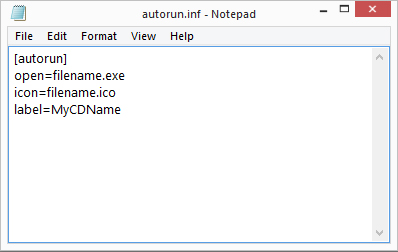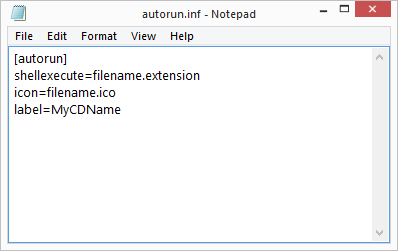If you have managed to follow the above instructions without a hitch, then an added functionality we can encode into the autorun is to display a custom icon in Windows Explorer for your CD, and a custom volume/label name rather than the default windows naming convention. The icon can be a company logo, or other graphics related to the contents of the disc, and the volume name a text title describing the disc content.
To include the customised icon, first create a 30 pixel by 30 pixel icon. This can be done in MS Paint, or if you have paid software such as Photoshop, than this can be used too. Save this file with a .ico extension. Then, in the autorun.inf file, we add the following line to the bottom: ‘icon=filename.ico’.
To create the custom volume/label name, in the autorun.inf file we add ‘label=MyCDName’, where MyCDName is replaced with a descriptive name for the content of the disc. Remember to put both these commands on their own new lines, and do not include the apostrophes.
Finally ,we ensure the autorun.inf file is placed in the root or top-most folder of the CD contents, and be sure to include this file when creating the master CD.
As a final note, check the disc works as intended by testing it in various computers, before sending it across to Disc Wizards, or any other CD duplication manufacturer for mass pressing.

